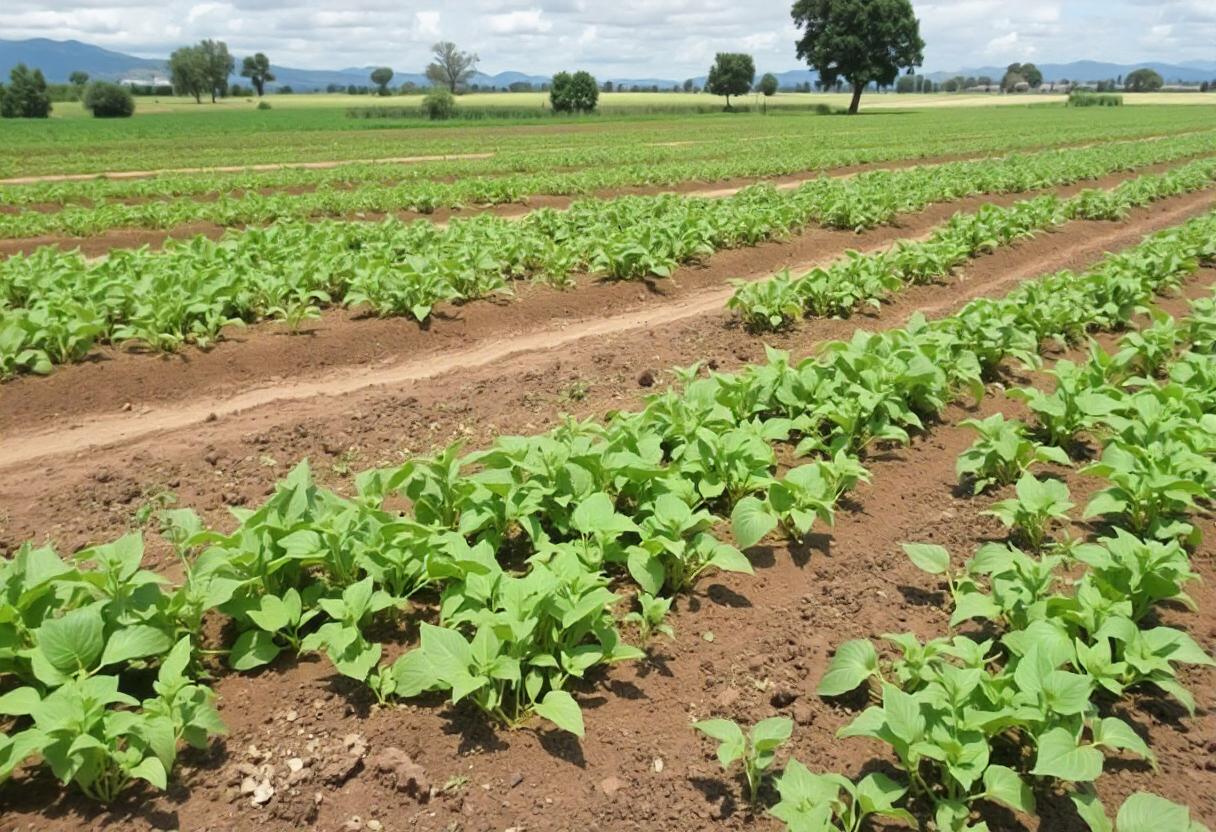
The global climate crisis has presented significant challenges to agriculture, a cornerstone of human civilization. Rising temperatures, unpredictable rainfall patterns, increased frequency of droughts, and soil degradation are putting immense pressure on food systems worldwide. In response, scientists and farmers are turning to climate-resilient crops as a key strategy to ensure food security and sustainability in the face of environmental change.
What Are Climate-Resilient Crops?
Climate-resilient crops are varieties of plants specifically bred or genetically modified to withstand adverse climatic conditions such as heat, drought, salinity, and floods. These crops possess traits that allow them to survive and thrive in challenging environments, making them essential in regions that are particularly vulnerable to the impacts of climate change.
There are various methods to develop climate-resilient crops, including conventional breeding, genetic modification, and the use of biotechnology tools like CRISPR-Cas9 gene editing. The goal is to create plants that can not only survive in harsh conditions but also maintain or even increase yield potential under such circumstances.
The Importance of Climate-Resilient Crops
1. Mitigating Food Insecurity
As climate change progresses, food production becomes increasingly vulnerable. Many traditional crop varieties fail to cope with the rapidly changing weather patterns, leading to reduced yields and, in some cases, complete crop failure. This poses a serious risk to global food security, particularly in regions already suffering from hunger and malnutrition.
Climate-resilient crops offer a solution by providing more reliable harvests under extreme conditions. For example, drought-resistant maize and flood-tolerant rice varieties have been developed to combat the frequent and unpredictable climatic events in sub-Saharan Africa and Southeast Asia, respectively. These innovations help stabilize food production and ensure a steady supply even in the face of climatic disruptions.
2. Reducing Agricultural Water Demand
Water scarcity is a growing problem in many parts of the world due to the combined effects of climate change and population growth. Traditional crops often require large amounts of water to thrive, but climate-resilient crops, particularly drought-tolerant varieties, are engineered to use water more efficiently.
For example, drought-resistant wheat and maize varieties can significantly reduce the amount of water needed for cultivation, allowing farmers to grow these crops in arid regions with limited water resources. This not only helps conserve water but also allows for the expansion of agricultural activities into areas that were previously unsuitable for farming.
3. Improving Soil Health and Reducing Land Degradation
Climate change exacerbates soil degradation through processes like erosion, salinization, and nutrient depletion. Traditional farming practices often strip the land of essential nutrients, making it harder to grow crops in the long term. Climate-resilient crops are often bred with traits that make them better suited to poor soil conditions or that help improve soil health over time.
For instance, certain varieties of legumes are bred to enhance their nitrogen-fixing ability, improving soil fertility naturally without the need for chemical fertilizers. Other crops are more tolerant of saline soils, which are increasingly common in coastal and arid regions due to rising sea levels and irrigation practices.
4. Supporting Smallholder Farmers
Smallholder farmers, particularly in developing countries, are disproportionately affected by the impacts of climate change. They often lack the resources to adapt to changing conditions and are more vulnerable to the resulting crop failures. Climate-resilient crops can play a crucial role in supporting these farmers by providing them with crop varieties that are better suited to the new climate realities they face.
By cultivating drought-resistant, heat-tolerant, or flood-resilient crops, smallholders can increase their resilience and reduce their dependence on external inputs like water and fertilizers. This not only helps them maintain their livelihoods but also empowers them to continue producing food for their local communities.
5. Conserving Biodiversity
As climate change alters ecosystems, the risk of losing crop biodiversity becomes a serious concern. Many traditional crops and their wild relatives are at risk of extinction due to shifting climatic conditions. Climate-resilient crops, particularly those developed through cross-breeding with wild varieties, can help preserve genetic diversity in agriculture.
For example, wild relatives of staple crops like rice, wheat, and barley often possess traits that make them more resistant to environmental stressors. By incorporating these traits into commercial crop varieties, scientists are helping to safeguard crop biodiversity while improving agricultural productivity in a changing climate.
Examples of Climate-Resilient Crops
Several climate-resilient crops have already been developed and are being implemented in various regions:
- Drought-Tolerant Maize: Developed for sub-Saharan Africa, drought-tolerant maize varieties have shown increased yields in regions where water scarcity is a growing concern.
- Scuba Rice: In South and Southeast Asia, where seasonal flooding is a major issue, “scuba rice” has been developed to withstand submersion in water for extended periods without significant yield loss.
- Salt-Tolerant Barley: In regions affected by soil salinization, salt-tolerant barley varieties have been created to thrive in high-salinity soils where other crops would fail.
- Heat-Tolerant Wheat: With rising global temperatures, wheat farmers are increasingly turning to heat-tolerant varieties that can withstand higher temperatures during the critical growing season.